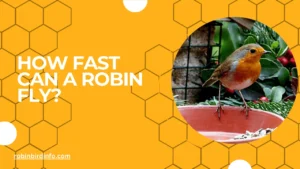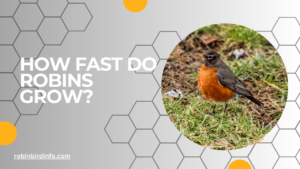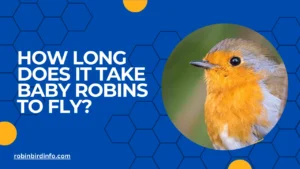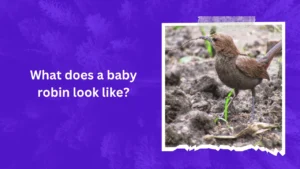Have you ever witnessed the heartwarming spectacle of a young Robin taking its first tentative flight?
It’s a truly remarkable moment, a testament to the wondrous transformation that occurs within a nest tucked away amidst the leaves. But how long does it actually take for these seemingly helpless chicks to morph into capable fliers?
This seemingly simple question reveals a fascinating glimpse into the critical stage of a Robin’s life. Unlike human babies who take years to develop motor skills, Robin chicks experience a remarkably rapid growth and development within the nest.
Understanding this timeline, along with the factors that influence their first flight, can deepen our appreciation for these familiar backyard birds. So, buckle up and get ready to dive into the amazing journey of a baby Robin’s flight – from a tiny, featherless chick to a graceful bird soaring through the air!
Throughout this blog post, we’ll explore the typical timeframe for fledging, the incredible growth that occurs within the nest, and the external factors that can influence when these young Robins take to the skies.
You’ll also learn how parents play a crucial role in this process, ensuring their offspring are equipped with the necessary skills to survive in the wild.
Contents
- 1 Section 1: Nestling Stage
- 2 Section 2: Factors Influencing Fledging Time
- 3 Section 3: The Fledgling Stage
- 4 Section 4: Factors Affecting Fledgling Success
- 5 Section 5: Conservation Implications
- 6 Conclusion
- 7 FAQ’s
- 7.0.1 How long does it take for a baby Robin to learn to fly?
- 7.0.2 What do fledgling Robins eat?
- 7.0.3 Do Robin parents continue to care for their young after they fledge?
- 7.0.4 What are the challenges faced by fledgling Robins?
- 7.0.5 How can I help fledgling Robins?
- 7.0.6 What is the success rate of Robin fledglings?
Section 1: Nestling Stage
Hatching and Early Development: After approximately 12-14 days of incubation, Robin eggs begin to hatch. The tiny, featherless chicks emerge from their shells, relying on their parents for warmth and nourishment.
Growth and Development: Robin nestlings grow rapidly, gaining weight and developing feathers at an astonishing pace. Their eyes open within a few days, and they soon begin to vocalize and respond to their parents.
Parental Care: Both male and female Robins share the responsibility of feeding and protecting the nestlings. They bring insects, worms, and other small invertebrates to the nest and regurgitate them for the young birds.
Section 2: Factors Influencing Fledging Time
Food Availability: A plentiful supply of food is crucial for the rapid growth of nestling Robins. If food is scarce, the growth rate may slow down, and nestling survival may be compromised.
Weather Conditions: Weather conditions can significantly impact the timing of fledging. Cold, wet weather can delay development and increase the risk of mortality. Warm, dry weather, on the other hand, can promote faster growth and earlier fledging.
Predation Risk: Nestling Robins are vulnerable to predation from a variety of predators, including cats, snakes, and birds of prey. Parental vigilance and defensive behaviors can help to reduce predation risk and ensure the survival of the young.
Section 3: The Fledgling Stage
Fledging Process: After about 12-14 days in the nest, Robin nestlings are ready to fledge. This involves leaving the nest and taking their first flights. The exact timing of fledging can vary depending on factors such as weather conditions and food availability.
Parental Care After Fledging: Even after fledging, parent Robins continue to provide care for their young. They may feed and protect their fledglings for a few days or weeks, depending on the needs of the young birds.
Independent Feeding: As fledglings gain strength and experience, they gradually become more independent. They learn to forage for their own food, such as insects and berries.
Section 4: Factors Affecting Fledgling Success
Habitat Quality: The quality of the habitat surrounding the nest can significantly influence fledgling success. A diverse habitat with abundant food and shelter resources can increase the chances of fledgling survival.
Human Impact: Human activities, such as habitat loss, pesticide use, and domestic cats, can pose a threat to Robin populations and their fledglings.
Climate Change: Climate change can alter the timing of breeding seasons and the availability of food resources, potentially impacting the survival of Robin fledglings.
Section 5: Conservation Implications
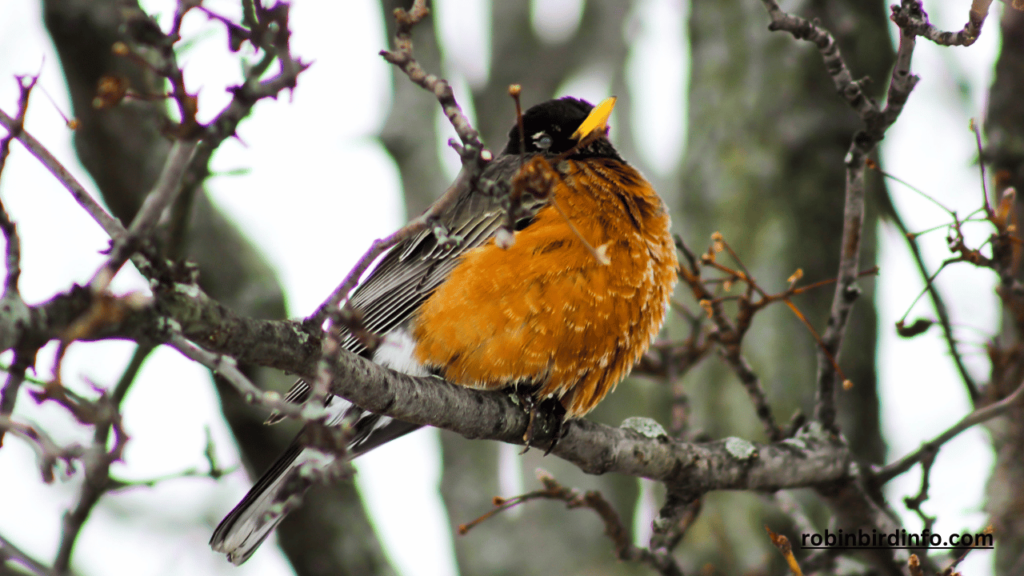
Protecting Nest Sites: To protect Robin nests, it is important to minimize human disturbance and create bird-friendly habitats. Installing nest boxes and providing suitable nesting materials can encourage Robins to nest in your yard.
Habitat Conservation: Preserving natural habitats, such as forests and wetlands, is crucial for the long-term survival of Robin populations.
Citizen Science: Participating in citizen science projects can help researchers monitor Robin populations and collect data on nesting success. By reporting nest locations and tracking fledgling survival, citizen scientists can contribute to conservation efforts.
Conclusion
The journey from nestling to independent bird is a remarkable transformation.
By understanding the factors that influence the timing of fledging and the challenges faced by young Robins, we can appreciate the complexity of their life cycle and take steps to protect these beloved birds.
By creating bird-friendly environments and minimizing human impact, we can ensure the continued success of Robin populations for generations to come.
FAQ’s
How long does it take for a baby Robin to learn to fly?
It typically takes about 12-14 days for a baby Robin to fledge and start flying.
What do fledgling Robins eat?
Fledgling Robins primarily eat insects, worms, and berries. They learn to forage for food on their own, but their parents may continue to feed them for a short period.
Do Robin parents continue to care for their young after they fledge?
Yes, parent Robins continue to care for their fledglings for a short period after they leave the nest. They may feed and protect them until they become fully independent.
What are the challenges faced by fledgling Robins?
Fledgling Robins face numerous challenges, including predation, starvation, and adverse weather conditions.
How can I help fledgling Robins?
If you find a fledgling Robin that appears healthy and alert, it’s best to leave it alone. Its parents are likely nearby and monitoring its progress. However, if the fledgling appears injured or is in immediate danger, you can contact a local wildlife rehabilitator for assistance.
What is the success rate of Robin fledglings?
The success rate of Robin fledglings can vary depending on factors such as food availability, weather conditions, and predation pressure. However, many fledglings successfully survive and become independent adults.


